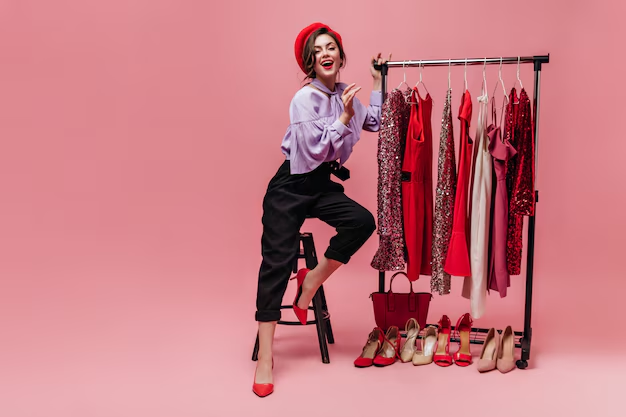The Intersection of Fashion and Technology: Wearable Tech and Innovation
The intersection of fashion and technology has become one of the most exciting and transformative areas in the modern world, blending style with functionality in ways that were once thought to be futuristic. Wearable tech, in particular, stands at the heart of this innovation, merging cutting-edge technology with fashion to create garments and accessories that serve both aesthetic and functional purposes. Here’s a deep dive into this evolving trend:
1. Smart Clothing and Apparel
- Fitness and Health Monitoring: Wearable technology in fashion often revolves around health and fitness. Garments like smart shirts, leggings, and jackets are equipped with sensors that track metrics such as heart rate, body temperature, respiration rate, and even posture. For example, Athos offers clothing that uses EMG (electromyography) sensors to measure muscle activity during workouts.
- Thermal Regulation: Some smart clothes, like those made by Ralph Lauren in partnership with OmSignal, use embedded sensors to monitor body temperature and adjust the fabric’s properties for comfort. Additionally, companies like Wearable X have created leggings that can guide yoga postures through haptic feedback.
- Interactive Fashion: Fashion brands like Levi’s and Google have explored the concept of “smart fabrics.” The Project Jacquard jacket features touch-sensitive fabrics that allow users to control their phones or music with a simple tap or swipe on the sleeve.
2. Smart Accessories
- Smart Watches and Jewelry: Devices like the Apple Watch and Samsung Galaxy Watch are popular for their stylish designs combined with health tracking, communication, and mobile connectivity. On the fashion side, brands like Kate Spade and Fossil have incorporated smart tech into their watches, while Ringly and Bellabeat have designed stylish smart rings and bracelets.
- Smart Glasses: The evolution of smart glasses is another example of this intersection. Ray-Ban partnered with Facebook to launch the Ray-Ban Stories, a pair of glasses with built-in cameras and speakers for hands-free communication. Similarly, Google Glass and Snapchat Spectacles have explored how wearables can blend both fashion and functionality.
3. Fashion and Augmented Reality (AR)
- Virtual Fashion Shows: AR has completely transformed the way fashion shows and collections are presented. Major designers, especially during the COVID-19 pandemic, started hosting virtual runways, allowing audiences to experience fashion in an entirely new way. AR also allows consumers to “try on” clothes digitally, like with apps from Zara or L’Oreal that use AR to simulate how makeup or clothing might look on their bodies.
- Interactive Retail Experiences: Brands such as Gucci and Nike are beginning to experiment with AR in retail settings, enabling customers to try on shoes or apparel virtually. Additionally, AR helps in crafting interactive marketing campaigns where consumers can engage with products in immersive environments.
4. Sustainability and Smart Textiles
- Eco-friendly Innovations: As sustainability becomes a critical topic in fashion, wearable tech has introduced ways to incorporate sustainable materials into clothing. PANGAIA, a material science company, develops eco-friendly clothing using plant-based and recycled materials, while also embedding technology to monitor fabric health, track wear patterns, or even assess the environmental footprint of garments.
- Recycling & Longevity: Wearable technology can play a role in garment lifecycle management, allowing consumers to track the condition and environmental impact of their clothing, thus promoting a more sustainable approach to consumption.
5. Fashion Meets Data
- Personalized Styling: AI-driven tools are used to create personalized fashion recommendations based on a user’s preferences, body type, and even social media activity. Apps like Stitch Fix use data science to provide customized clothing and styling advice. Similarly, The Fabricant, a digital fashion house, creates entirely virtual garments, offering an eco-friendly way for consumers to indulge in high-fashion digital creations.
- Wearable Data and Insights: Through AI, machine learning, and wearables, brands can collect data on how clothing performs in real life. This data-driven approach allows for the creation of highly functional clothing designs, tailored to the needs and demands of customers. This could include everything from more comfortable running shoes to jackets that automatically adjust based on environmental conditions.
6. The Future of Fashion and Technology
- Neural Wearables and Brain-Controlled Fashion: While still in the early stages, brain-computer interfaces (BCIs) could eventually allow wearers to control fashion items through thought alone. Imagine changing the color of your jacket or adjusting its design just by thinking about it!
- Metaverse Fashion: As virtual and augmented reality continue to evolve, the concept of digital fashion is gaining ground. In the metaverse, virtual avatars can wear digital clothing items that may never exist in the real world. Fashion designers like Balenciaga and Gucci are already creating virtual collections for gaming platforms like Fortnite and Roblox. These digital items could be a massive new market for brands in the coming years.
- Bio-reactive Clothing: The idea of fabrics that change in response to environmental factors is moving closer to reality. Designers are experimenting with textiles that react to changes in light, heat, or the wearer’s emotions, creating clothing that is ever-changing and adaptive.
Conclusion
The intersection of fashion and technology is reshaping the way we interact with the world of clothing. It is no longer just about looking good but also about feeling good and enhancing our experiences through the power of technology. Whether it’s through health monitoring, interactive displays, or sustainability, wearable tech continues to push the boundaries of what fashion can achieve. As both industries continue to innovate, the future of fashion promises even more exciting, futuristic possibilities.

